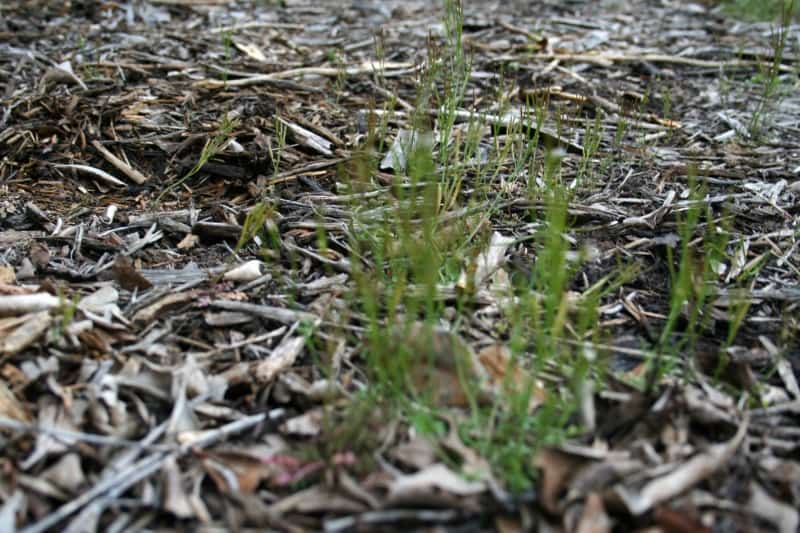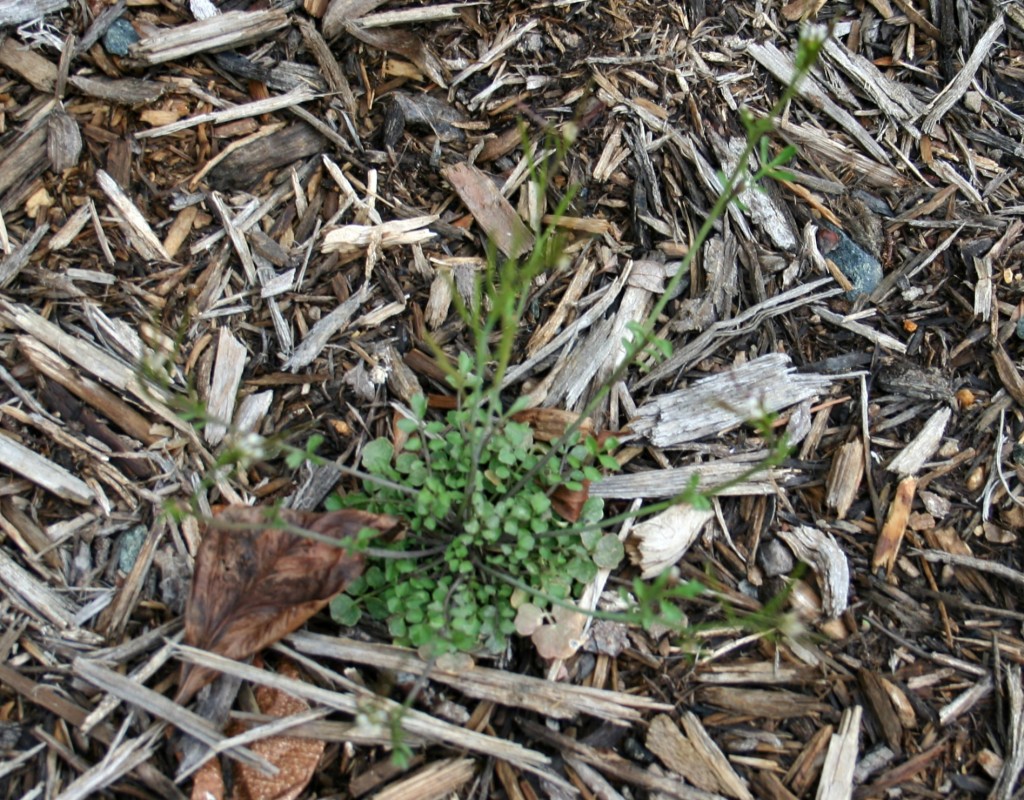I was going to post a picture of my blistered skin, but decided not to gross you out. The blisters are from weeding an area filled with black mustard or hairy black cress. The two are actually different weeds, but my handbook listed black cress as black mustard, so look for both names if you are looking it up. It’s a common early spring weed here in south central Virginia, and according to my Peterson’s Field Guide to Medicinal Plants, common throughout the Eastern United States.
Here is what it looks like:

Black cress viewed from the side. Most have tiny white flowers at the top which produce black seeds, hence the name “black mustard.”
Black cress is a perennial weed. The seeds sow in late fall, and the plants are common in “waste areas” (otherwise known as my lawn) and areas of poor soil. They bloom in late fall or early spring. The plants seen from the top are in the first picture; the side view is the second picture.
The plants are small, but you’ll find big clumps or clusters of them. The leaves are low to the ground and the plant sends up a big stalk with white flowers at the top. In a few short weeks, the plant produces hundreds of tiny black seeds which it shoots out from being jostled by wind or passing creatures. Then you won’t see it again until the cool temperatures in the fall or spring.
Although not a well-known skin irritant like poison ivy, hairy black cress produced burns like chemical burns on my hands. I was wearing gloves while I weeded, but only cloth gloves. Either a broken stem touched my skin for an extended period of time or the oils of the plant leaked through the cloth onto my hand, but either way, the oils created blisters similar to burns.
At first, the area itched and burned like fire. I’m prone to eczema outbreaks, so I thought it was my old pal, hand eczema, come back for a visit. My prescription eczema medicine made the rash burn even worse, however, and soon I had raised large, fluid-filled blisters. Once the blisters broke, others took their place. Fun, right? NO.
I washed with soap and water and applied Cortaid to stop the itch, which worked to calm the skin. Any normal burn creams or antibiotic ointments make it worse, so I have just been rinsing the area with warm water and letting it stay dry and clean. It still itches occasionally.
I spoke with a doctor friend this morning who is also a gardener, and she nodded knowingly when I described the itching and burning on my hand. Black cress, black mustard, and any plants in the Cardamine hursata (black cress) or mustard family can produce similar lesions if your skin is exposed enough to them!
I had no idea. I always wear gloves while weeding, but the day I ended up with the blisters was one of those marathon-weeding days. I had a huge patch of black hairy cress in the little garden next to my patio so I just weeded the entire thing by hand. Little did I know I’d pay for it days later!
So, my friends, know your weeds, wear garden gloves, and if you develop a rash, see your doctor. Make sure your doc knows garden weeds, though. Black hairy cress is a beast!






